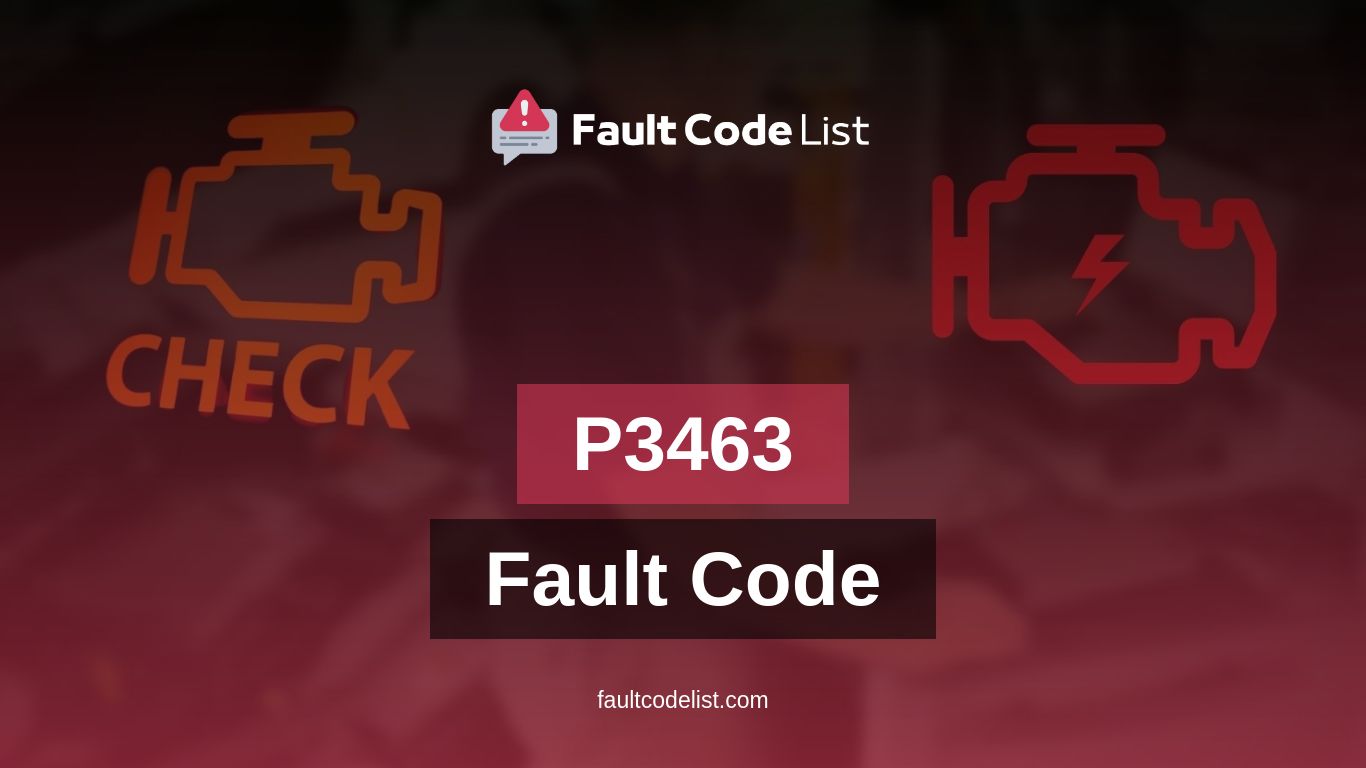P3463 indicates a low exhaust valve control circuit in cylinder 8 of the engine. It can result in decreased engine performance, poor fuel efficiency, misfires, and illuminated check engine light. The potential causes for this code include a defective solenoid, wiring issues, circuit shorted to ground, PCM problems, or incorrect engine oil. To resolve the issue, it is essential to inspect and replace faulty components, repair any wiring or connector problems, and ensure the engine oil meets the necessary requirements. Seeking professional assistance is advisable for accurate diagnosis and prompt resolution.
What are the symptoms of code P3463?
When encountering code P3463, also known as Cylinder 8 Exhaust Valve Control Circuit Low, you might experience the following symptoms:

- Decreased engine performance
- Poor fuel efficiency
- Misfires or hesitation during acceleration
- Illuminated check engine light
- Engine running rough or stalling
These symptoms indicate that there may be an issue with the exhaust valve control circuit in cylinder 8 of your vehicle’s engine.
What are the reasons for code P3463?
There are several potential reasons for code P3463 to occur:
- Defective exhaust valve control solenoid
- Wiring or connector issues in the exhaust valve control circuit
- Exhaust valve control circuit shorted to ground
- Problems with the powertrain control module (PCM)
- Incorrect engine oil viscosity or contamination
It is important to identify the underlying cause in order to effectively resolve the issue.
What is the solution for code P3463?
To address code P3463, consider the following solutions:
- Inspect and test the exhaust valve control solenoid for proper operation. Replace if necessary.
- Check the wiring harness and connectors for any damage, loose connections, or corrosion. Repair or replace as needed.
- Verify the exhaust valve control circuit is not shorted to ground. Repair any faults.
- Perform a thorough inspection of the PCM and its wiring. Replace the PCM if necessary.
- Ensure the engine oil is of the correct viscosity and free from contaminants. Change the oil if needed.
It is recommended to consult a professional mechanic or refer to the vehicle’s service manual for accurate diagnosis and appropriate repair procedures.
